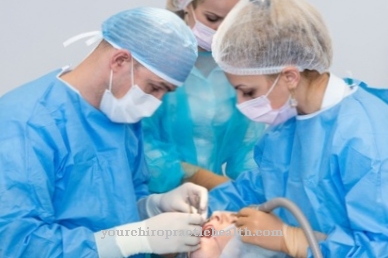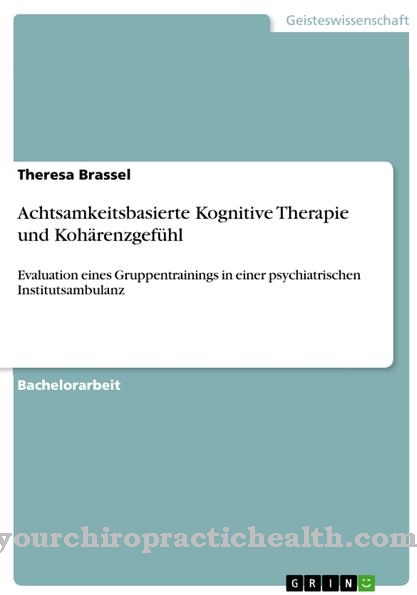histology is the study of human tissue. This term is made up of two terms from the Greek and Latin languages. “Histos” means “tissue” in Greek and “logos” stands for “teaching” in Latin.
What is the histology?

In histology, doctors use technical aids such as a light microscope to identify the structure of different structures.
The microscopic anatomy divides the organs according to their components, which get smaller and smaller the deeper the investigations go into the different structures. The areas of early diagnosis, pathology, anatomy and biology mainly deal with this medical field.
Treatments & therapies
The microscopic anatomy divides the organs into three groups according to their size and components. Histology as the study of human tissue is a major component of biology, medicine, anatomy and pathology.
Cytology already goes deeper into the human tissue layers and deals with cell theory and functional composition. Molecular biology is dedicated to the smallest components of human cells, the molecules, which are also known as particles. The main task of histology is the early diagnosis of tumors. Using the finest examination methods, the doctors find out whether there are pathological changes, i.e. malignant tumors, or whether the tissue is still healthy and the tumors are benign. Furthermore, the histologists are able to detect bacterial, parasitic and inflammatory diseases as well as metabolic diseases.
The tissue theory also forms the starting point for later therapeutic approaches based on the histological findings. Histologists and pathologists use histology to make "small things big or visible". Part of the diseased tissue is removed from the patient with a sample excision (biopsy). This tissue sample is then examined by a pathologist by making micrometer-thin cutting patterns. In the next step, these patterns are colored and viewed under the light microscope. Sometimes a high-resolution electron microscope is also used, but it is mainly used in research. Before the examination, histotechnology deals with how the tissue is processed. A medical technical assistant (MTA) is responsible for this step. It fixes the tissue in order to achieve stabilization.
The assistant looks at the cut tissue macroscopically (with the eye), drains it and impregnates it in liquid paraffin. The tissue sample is then blocked in paraffin and, in the next step, a cut with a diameter of 2 to 5 µm is made. This is attached to the glass slide and colored. The routine state of the art is the production of an FFBE preparation, a "formalin-fixed paraffin-embedded tissue". The tissue sample is stained in a hematoxylin-eosin. This process takes a day or two from the first to the last step. A quick section examination is a less time-consuming tissue examination. This is always done when the surgeon needs information about the removed tissue during an operation.
For example, if the surgeon removes a tumor from the kidney, he needs information about the nature of the tissue during the operation. He needs to know whether the tumor has already been completely removed or whether malignant tissue on the edge zones indicates further pathological changes. The findings of the rapid section examination determine the further course of the operation. The tissue sample is frozen within ten minutes at -20 ° C and stabilized. A 5 to 10 µm section is made using a microtome, attached to a glass plate as a slide and colored. The findings are immediately forwarded to the operating room so that the surgeon is able to make a decision about the further course of the operation.
Diagnosis & examination methods
The most important technical aids in histology are the various staining methods. The histology classifies the cell structures according to their color reaction to the dye used. These are biological stains. Neutrophil cell structures are not stained by either acidic or basic dyes.
The ingredients are lipophilic. Basophilic cell structures work with basic dyes such as hematoxylin. Acidophilic cell structures are colored by basic and acidic dyes such as eosin, acid fuchsin and picric acid. Other cell structures are nucleophilic and argyrophilic. Argyrophilic cell structures bind silver ions, nucleophilic DNA-binding and basic dyes. The hematoxylin-eosin staining (HE staining) is most frequently used as routine and overview staining by computer-controlled staining machines. At the same time, special manual dyes are used for individual questions.
Histochemical investigations present a complex picture of chemical-physical processes with regard to electroadsorption, diffusion (distribution) and interfacial adsorption in connection with the charge distributions within the dye molecules. The ionic bond creates the main binding force by binding acidic dyes to basic proteins. In histochemical processes, a dye reacts to a tissue component. Enzyme histochemical methods cause color development through the activity of the cell's own enzymes. Classic histotechnology has been supplemented by immunohistochemistry since the 1980s. This proves the cell properties on the basis of an antigen-antibody reaction. This is made visible by a multi-section technique based on the color reaction at the location of the antigen (protein).
In situ hybridization was invented a decade later. Certain nucleotide sequences are detected by melting double-stranded DNA and spontaneously docking single strands using RNA or DNA. The nucleic acid sequences are displayed using probes with fluorochrome labeling. This method is known as fluorescence in situ hybridization (FISH).
Important staining methods are the azan staining, Prussian blue reaction, Golgi staining, Gram staining and Giemsa staining. These staining methods work with red cell nuclei, reddish cytoplasm, blue reticular fibers and collagens, red muscle fibers, the detection of “trivalent iron ions”, the silvering of individual ions, bacterial differentiation and differentiating blood cell staining.













.jpg)

.jpg)
.jpg)











.jpg)